 Your new post is loading...
 Your new post is loading...

|
Scooped by
nrip
|
Identifying new COVID-19 cases is challenging. Not every suspected case undergoes testing, because testing kits and other equipment are limited in many parts of the world. Yet populations increasingly use the internet to manage both home and work life during the pandemic, giving researchers mediated connections to millions of people sheltering in place.
Objective: The goal of this study was to assess the feasibility of using an online news platform to recruit volunteers willing to report COVID-19–like symptoms and behaviors.
Methods: An online epidemiologic survey captured COVID-19–related symptoms and behaviors from individuals recruited through banner ads offered through Microsoft News. Respondents indicated whether they were experiencing symptoms, whether they received COVID-19 testing, and whether they traveled outside of their local area.
Results: A total of 87,322 respondents completed the survey across a 3-week span at the end of April 2020, with 54.3% of the responses from the United States and 32.0% from Japan. Of the total respondents, 19,631 (22.3%) reported at least one symptom associated with COVID-19. Nearly two-fifths of these respondents (39.1%) reported more than one COVID-19–like symptom. Individuals who reported being tested for COVID-19 were significantly more likely to report symptoms (47.7% vs 21.5%; P<.001). Symptom reporting rates positively correlated with per capita COVID-19 testing rates (R2=0.26; P<.001). Respondents were geographically diverse, with all states and most ZIP Codes represented. More than half of the respondents from both countries were older than 50 years of age.
Conclusions: News platforms can be used to quickly recruit study participants, enabling collection of infectious disease symptoms at scale and with populations that are older than those found through social media platforms. Such platforms could enable epidemiologists and researchers to quickly assess trends in emerging infections potentially before at-risk populations present to clinics and hospitals for testing and/or treatment.
source: Credit to Regenstrief Institute read the entire study here : https://www.jmir.org/2021/5/e24742

|
Scooped by
nrip
|
Artificial intelligence(AI) is slowly demonstrating its ability to improve healthcare. Typical examples are - Predicting health outcomes
- Improving workflow inefficiencies
- Assisting in Triaging
However, questions remain about how to ensure these technologies and tools are developed, implemented and maintained responsibly A NAM report published in JAMA Viewpoint column, “Artificial Intelligence in Health Care: A Report From the National Academy of Medicine.” recommends that people developing, using, implementing and regulating health care AI do seven key things. Promote population-representative data with accessibility, standardization and quality is imperative. [to ensure accuracy for all populations] Prioritize ethical, equitable and inclusive medical AI while addressing explicit and implicit bias. [to understand the potential of the Underlying biases to worsen or address existing inequity ] Contextualize the dialogue of transparency and trust, which means accepting differential needs. [to clarify the level of transparency needed across a AI developers, implementation teams, users and regulators] Focus in the near term on augmented intelligence rather than AI autonomous agents. [supporting data synthesis, interpretation and decision-making by clinicians and patients is where opportunities are now] Develop and deploy appropriate training and educational programs. [Training programs must be multidisciplinary and should engage AI developers, implementers, health care system leadership, frontline clinical teams, ethicists, humanists, patients and caregivers] Leverage frameworks and best practices for learning health care systems, human factors and implementation science. [Have a robust and mature IT governance strategy in place before Health delivery systems use AI formally] Balance innovation with safety through regulation and legislation to promote trust. [evaluate deployed clinical AI for effectiveness and safety based on clinical data.] read more at https://www.ama-assn.org/practice-management/digital/7-tips-responsible-use-health-care-ai

|
Scooped by
nrip
|
Technologists have reached incredible heights in getting people to voluntarily spend large amounts of their time playing video games and now entrepreneurs are combining those practices with neuroscience to create many exciting new startups. How gaming works as a prescriptionImagine you’re at the doctor’s office and she hands you a prescription as you walk out of the clinic. Instead of heading to your local pharmacy for a bottle of pills, though, this Rx entitles you to a set of 30 sessions on a video game console. WellDoc, founded in 2005 as a software prescribed by physicians to better manage diabetes as part of its BlueStar program, is seeing tremendous results in their clinical studies and with patients. “We are not only seeing reductions in A1c, but also reductions in acute utilization and control, reduced blood-glucose scatter. We have to look at control of extreme out of bound events and we are seeing significant reduction in those. We saw in one study a 15 percent reduction in acute utilization,” said WellDoc’s chief strategy officer Anand Iyer. Video games as medical devices are succeeding, and more are arriving on the market each year. What is driving this trend?A few elements are coalescing to create the environment for games to succeed as medicine. 1) There is a real, unmet need in many areas like mental health. 2) People are already gaming, so healthcare is “going with the flow.” Smart technologists who are leading “software as a medical device (SAMD)” are working with easy, everyday life practices to help transform patient adherence. What do people already enjoy doing, and do effortlessly? Technologists are hoping that by leveraging the addictive quality of video games, they can help people stay the course on their therapy regimens. 3) The drive to lower healthcare costs encourages digital solutions. Video games, being both more addictive and more affordable, could have an intrinsic advantage over big pharma in the cost arena. The future of gaming as therapy This new digital frontier is exciting, but there are some challenges to commercializing these products. We tend to think that giving kids with ADHD a video game would be fun, but it’s important to remember that these games target the very thing that kids have difficulty with. “It’s a tough game for them, and they’re exhausted at the end,” said one of the panelists. “It’s important that the game be designed so that the kids don’t get overwhelmed and give up, saying ‘This is hard, I’m going back to Minecraft.’” In order to be viable, digital products must understand the underlying science of the condition they’re treating more at https://www.medicaldesignandoutsourcing.com/how-video-games-could-take-market-share-big-pharma/

|
Scooped by
nrip
|
If fitness app developers can learn how to harness contextual sensor data, we'll all get healthier.
Google may be working on an application programming interface for fitness tracking in Android smartphones.
This new API could help Android smartphones automatically detect its users' daily motion and exercise routines to provide contextual information for users, but it could also help third-party developers build integrated fitness apps that are much more native to than Android’s current ways of tracking fitness.
The API was discovered by the unofficial Google Operating System blog, which noted the API is not yet available to the public or developers but could be in the next version of Android, or, more likely, an update to Google Play Developer Services.

|
Scooped by
nrip
|
2012 brought a new product category to the market and saw many acquisitions from wearable manufacturers looking to get the edge in a hotly contested space but 2013 has undoubtably been the breakout year for wearables and quantified self hitting the mainstream.
Back in June I started studying the space pretty seriously. I made a few observations and ended up co-founding my own health & fitness app that went on to amass 30,000 downloads as we tested the market (visit BodyWise).
Back when we launched BodyWise, there wasn’t much in the way of being able to track beyond your distance, steps or sleep. We brought tracking of a wide variety of health & fitness metrics to the everyday person. Since our launch I could name half a dozen serious competitors playing on our level and another half a dozen wearables that brought our features to their apps and devices.
As we develop BodyWise v2 I wanted to share with you my summary of the state of play for Wearables & the Quantified Self in 2014:

|
Scooped by
nrip
|
The concepts of “self-tracking” and “the quantified self” have recently begun to emerge in discussions of how best to optimize one’s life. These concepts refer to the practice of gathering data about oneself on a regular basis and then recording and analyzing the data to produce statistics and other data (such as images) relating to one’s bodily functions and everyday habits. Some self-trackers collect data on only one or two dimensions of their lives, and only for a short time. Others may do so for hundreds of phenomena and for long periods.
The tracking and analysis of aspects of one’s self and one’s body are not new practices. People have been recording their habits and health-related metrics for centuries as part of attempts at self-reflection and self-improvement.
What is indisputably new is the term “the quantified self” and its associated movement, which includes a dedicated website with that title, and regular meetings and conferences, as well as the novel ways of self-tracking using digital technologies that have developed in recent years.
A growing range of digital devices with associated apps are now available for self-tracking [1]. Many of these devices can be worn on or close to the body to measure elements of the user’s everyday life and activities and produce data that can be recorded and monitored by the user. They include not only digital cameras, smartphones, tablet computers, watches, wireless weight scales, and blood pressure monitors, but also wearable bands or patches, clip-on devices and jewelry with embedded sensors able to measure bodily functions or movement and upload data wirelessly.
In many of these devices global positioning devices, gyroscopes, altimeters, and accelerometers provide spatial location and quantify movement. These technologies allow self-trackers to collect data on their moods, diet, dreams, social encounters, posture, sexual activity, blood chemistry, heart rate, body temperature, exercise patterns, brain function, alcohol, coffee and tobacco consumption, and many other variables.
Read more at the original source: http://ieeexplore.ieee.org/stamp/stamp.jsp?reload=true&tp=&arnumber=6679313

|
Scooped by
nrip
|
A fundamental question about any (Clinical Decision Support System) CDS is just how good is it, i.e. does it get the right answer for generic and specific patients? If it doesn’t this may be the result of one or more issues such as flawed information having been used to build the system, flawed programming, or the patient being outside of an often undefined or ill defined population when for another population the CDS does actually provide the right answer
A common CDS disclaimer is that it is always up to the practitioner to second guess the CDS as necessary, or in other words, the CDS is not actually supposed to be relied upon. Depending on the complexity of the underlying theory and data, the practitioner may or may not in reality have the ability to do this, or they may not have a more rational basis for doing so than “I don’t think that is right”. Such a conclusion would put the practitioner outside of what might be considered a practice guideline. On the other hand if a CDS is easy to second guess, then it might not be very valuable in the first place.
In this context comes the recent controversy over the new cholesterol and statin on line “risk calculator”. As first reported in the New York Times, it was determined that an online risk calculator overestimated patient specific risk by an average of 100% (100 here is not a typo). If action were based on this erroneous calculator, statin therapy would be substantially over-prescribed. In this regard the Times cites a statement from the organizations that published the guidelines that will continue to be a CDS classic: patients and doctors should discuss treatment options rather than blindly follow a calculator. Or, in other words, it is not to be relied on.
Apparently the problem with the risk calculator is at least in part that the risk data on which it was based was decades old and therefore did not apply to the current US population which in at least some ways has actually gotten healthier. In addition the mathematical model used was one of linearly increasing risk which has not been demonstrated to be correct. Thus the flaws in the calculator were a result of the inappropriateness and lack of justification of the knowledge bases used to build it. Despite these fundamental issues, no plans to remove or revise the calculator were identified.
This risk calculator was not imbedded within an EHR, and it requires manual input of multiple patient parameters. And of course there are additional potentially relevant patient parameters that are not part of the calculation. However something like this certainly could be part of an EHR either by direct integration, or by pointing the EHR user to it and perhaps automatically using relevant patient information that might already be in the EHR.
more at http://www.hitechanswers.net/lesson-clinical-decision-support/
|

|
Scooped by
nrip
|
Skeleton/bone marrow involvement in patients with newly diagnosed Hodgkin’s lymphoma (HL) is an important predictor of adverse outcomes1. Studies show that FDG-PET/CT upstages patients with uni- or multifocal skeleton/bone marrow uptake (BMU) when iliac crest bone marrow biopsy fails to find evidence of histology-proven involvement. The general recommendation is, therefore, that bone marrow biopsy can be avoided when FDG-PET/CT is performed at staging. Our aim was to develop an AI-based method for the detection of focal skeleton/BMU and quantification of diffuse BMU in patients with HL undergoing staging with FDG-PET/CT. The output of the AI-based method in a separate test set was compared to the image interpretation of ten physicians from different hospitals. Finally, the AI-based quantification of diffuse BMU was compared to manual quantification. Artificial intelligence-based classification A convolutional neural network (CNN) was used to segment the skeletal anatomy11. Based on this CNN, the bone marrow was defined by excluding the edges from each individual bone; more precisely, 7 mm was excluded from the humeri and femora, 5 mm was excluded from the vertebrae and hip bones, and 3 mm was excluded from the remaining bones. Focal skeleton/bone marrow uptake The basic idea behind our approach is that the distribution of non-focal BMU has a light tail and most pixels will have an uptake reasonably close to the average. There will still be variations between different bones. Most importantly, we found that certain bones were much more likely to have diffuse BMU than others. Hence, we cannot use the same threshold for focal uptake in all bones. At the other end, treating each bone individually is too susceptible to noise. As a compromise, we chose to divide the bones into two groups: -
“spine”—defined as the vertebrae, sacrum, and coccyx as well as regions in the hip bones within 50 mm from these locations, i.e., including the sacroiliac joints. -
“other bones”—defined as the humeri, scapulae, clavicles, ribs, sternum, femora, and the remaining parts of the hip bones. For each group, the focal standardized uptake values (SUVs) were quantified using the following steps: - Threshold computation. A threshold (THR) was computed using the mean and standard deviation (SD) of the SUV inside the bone marrow. The threshold was set to
- 2. Abnormal bone region. The abnormal bone region was defined in the following way:
Only the pixels segmented as bone and where SUV > THR were considered. To reduce the issues of PET/CT misalignment and spill over, a watershed transform was used to assign each of these pixels to a local maximum in the PET image. If this maximum was outside the bone mask, the uptake was assumed to be leaking into the bone from other tissues and was removed. Finally, uptake regions smaller than 0.1 mL were removed. - 3.Abnormal bone SUV quantification. The mean squared abnormal uptake (MSAU) was first calculated as
MSAU=meanof(SUV−THR)2overtheabnormalboneregion. To quantify the abnormal uptake, we used the total squared abnormal uptake (TSAU), rather than the more common total lesion glycolysis (TLG). We believe TLG tends to overestimate the severity of larger regions with moderate uptake. TSAU will assign a much smaller value to such lesions, reflecting the uncertainty that is often associated with their classification. Instead, TSAU will give a larger weight to small lesions with very high uptake. This reflects both the higher certainty with respect to their classification and the severity typically associated to very high uptake. TSAU=MSAU×(volumeoftheabnormalboneregion). This calculation leads to two TSAU values; one for the “spine” and one for the “other bones”. As the TSAU value can be nonzero even for patients without focal uptake, cut-off values were tuned using the training cohort. The AI method was adjusted in the training group to have a positive predictive value of 65% and a negative predictive value of 98%. For the “spine”, a cut-off of 0.5 was used, and for the “other bones”, a cut-off of 3.0 was used. If one of the TSAU values was higher than the corresponding cut-off, the patient was considered to have focal uptake. Results Focal uptake Fourteen of the 48 cases were classified as having focal skeleton/BMU by the AI-based method. The majority of physicians classified 7/48 cases as positive and 41/48 cases as negative for having focal skeleton/BMU. The majority of the physicians agreed with the AI method in 39 of the 48 cases. Six of the seven positive cases (86%) identified by the majority of physicians were identified as positive by the AI method, while the seventh was classified as negative by the AI method and by three of the ten physicians. Thirty-three of the 41 negative cases (80%) identified by the majority of physicians were also classified as negative by the AI method. In seven of the remaining eight patients, 1–3 physicians (out of the ten total) classified the cases as having focal uptake, while in one of the eight cases none of the physicians classified it as having focal uptake. These findings indicate that the AI method has been developed towards high sensitivity, which is necessary to highlight suspicious uptake. Conclusions The present study demonstrates that an AI-based method can be developed to highlight suspicious focal skeleton/BMU in HL patients staged with FDG-PET/CT. This AI-based method can also objectively provide results regarding high versus low BMU by calculating the SUVmedian value in the whole spine marrow and the liver. Additionally, the study also demonstrated that inter-observer agreement regarding both focal and diffuse BMU is moderate among nuclear medicine physicians with varying levels of experience working at different hospitals. Finally, our results show that the automated method regarding diffuse BMU is comparable to the manual ROI method. read the original paper at https://www.nature.com/articles/s41598-021-89656-9

|
Scooped by
nrip
|
Microsoft says care coordination and secure messaging tools are coming to its Teams platform Microsoft is holding its Ignite conference this week, and the company teased a forthcoming care coordination tool that is in early stages of development – as well two secure messaging features it's creating as part of an effort to tailor Teams for specific industries. "As an example of how Teams can enable secure workflows for regulated industries, we're delivering a new care coordination solution, now available in private preview, that gives healthcare teams a secure hub for coordinating care across multiple patients," Ron Markezich, Corporate Vice President for Microsoft 365, wrote on the company's blog. "It provides for integration with electronic health record systems and enables care providers to communicate about patient care in real-time within Teams' secure platform.” Markezich said Microsoft is also releasing two new secure message capabilities for Teams: one for for image annotation and the other for priority notifications. While the image function is already generally available, the priority notifications feature is scheduled to be available for companies that use the commercial version of Teams by year's end. "These capabilities support HIPAA compliance and enable doctors, nurses, and other clinicians to communicate about patients while avoiding the privacy risks that arise when healthcare professionals use consumer chat apps," Markezich added. Microsoft said the new care coordination tools will integrate with EHR systems so clinicians and caregivers can communicate via the Teams platform. Considering that the average hospital has 16 different EMR vendors across all its affiliated practices, that integration won't be as easy as it might sound. That said, the tech is in "private preview" mode, so it's a bit early to tell what shape it will take by the time it reaches the open market. read the original story at https://www.healthcareitnews.com/news/microsoft-says-care-coordination-and-secure-messaging-tools-are-coming-its-teams-platform

|
Scooped by
nrip
|
As the number of self-tracking health and fitness tools available to consumers continues to climb, a persistent question has been whether the data they collect might be useful to health researchers. Along with that: Are people who self-track comfortable sharing their data with researchers?
A new, must-read report from San Diego’s California Institute for Telecommunications and Information Technology (Calit2), funded by the Robert Wood Johnson Foundation, explores these and other questions.
Based on a survey with hundreds of self-trackers, a majority — 57 percent — said one critical assurance they would need before agreeing to make their self-tracked, personal health data available to researchers was that their privacy would be protected. More than 90 percent also said it was important that their data remained anonymous. Respondents said they’d be more comfortable sharing data if they knew it was only going to be used for “public good” research.
One open-ended survey that the report’s researchers posed to self-trackers found that 13 percent of respondents specifically mentioned an aversion to commercial or profit-making use of their data, according to the report. One respondent wrote: “It depends who gets it. Research using these data will be instrumental in the future of personal predictive services, but also for that reason are likely to be exploited by marketers and the politically short-sighted. Thus I would like transparency for who has access to my data.”
Among the almost 100 health researchers interviewed for the report, 46 percent said that they had already used self-tracking data in their research previously. Some 23 percent reported that they had already worked with digital health companies that offer apps or devices to consumers to track their health.
Overall, the researchers interviewed for the report were “generally enthusiastic” about the prospect of using self-tracking data in the future — 89 percent agreed or strongly agreed that such data would prove useful to their research efforts. Almost all of those researchers surveyed said that kind of data could answer questions that other data could not.
more at http://mobihealthnews.com/30979/health-researchers-see-unique-opportunity-in-self-tracker-data/

|
Scooped by
nrip
|
A new generation of products that utilize the latest wireless technology are offering promising alternatives for some people with hearing loss.
The devices which are classified as a personal sound amplifier product, or P.S.A.P., are designed to amplify sounds in a recreational environment.
Unlike hearing aids, P.S.A.P.’s are exempt from Food and Drug Administration oversight and can be sold as electronic devices directly to consumers, with no need to see a physician before buying one. They come with a range of features and vary widely in price.
And while some hearing professionals have long cautioned against the devices, citing their unreliability and poor quality, many also say that a new generation of P.S.A.P.s that utilize the latest wireless technology are offering promising alternatives for some people with hearing loss.
There are limitations to who can benefit. “A personal sound amplifier is really designed for patients who have normal or near normal hearing. It’s not really designed as a hearing device to address significant sensorineural hearing loss,” said Bettie Borton, the president of the American Academy of Audiology. It is also important that those with hearing loss be screened for potentially serious medical problems that may be causing the problem.
more at http://well.blogs.nytimes.com/2014/01/15/better-hearing-through-bluetooth/

|
Scooped by
nrip
|
We are all encouraged to live a healthy lifestyle to avoid potentially life-threatening diseases. Exercising and good dietary habits make a big difference in maintaining our health.
However, for some diseases, our cells carry important information that can alter this equation. It is estimated that the cells in our body have about 30 thousand genes. The information they encode tells each cell how to behave within our body.
For example, a particular gene might determine the eye color of a person; another gene might tell a cell that it should become heart tissue; and yet another could be in charge of producing insulin in our body. However, sometimes these genes can be mutated, causing the gene to be either nonfunctional or functioning with a different behavior. These mutations have been found to cause some of the most challenging diseases.
“Personalized Medicine” is a nascent field that tailors diagnosis and treatment to a patient by analyzing their clinical and genomic information. This is where bioinformaticians are assisting clinicians to achieve better diagnosis, treatments and clinical outcomes. Computer algorithms are a crucial part in this process, since human researchers cannot process the vast amount of information and interactions in the genomic data.
Algorithms can take into consideration a wide range of variables, including clinical signs and symptoms, laboratory data, and information from the DNA, such as the functioning of genes. They combine this information from a wide selection of people to come up with a model that can predict reasonably well the presence of a given disease. The rationale for this is to allow computers to ‘learn from past experiences’, and progressively gather data to improve upon their decisions.

|
Scooped by
nrip
|
Human interaction with robots is about to get a little more personal. Meet 'Furhat', the face of tomorrow's interactive technology.
An increasingly important – and sometimes frustrating – part of daily life is dealing with so-called “user interfaces”. Whether it’s a smartphone or an airport check-in system, the user’s ability to get what they want out of the machine relies on their own adaptability to unfamiliar interfaces.
But what if you could simply talk to a machine the way you talk to a human being? And what if the machine could also ask you questions, or even address two different people at once?
These kinds of interactive abilities are being developed at KTH Royal Institute of Technology with the help of an award-winning robotic head that takes its name from the fur hat it wears.
With a computer-generated, animated face that is rear-projected on a 3D mask, Furhat is actually a platform for testing various interactive technologies, such as speech synthesis, speech recognition and eye-tracking. The robot can conduct conversations with multiple people, turning its head and looking each person straight in the eye, while moving its animated lips in synch with its words.
Furhat’s ability to turn its face to multiple people in a conversation is enabled by face-tracking software. But its ability to make eye contact is achieved through projection.
Unlike a 2D image, which can appear to be looking at everybody in the room at once – a phenomenon known as the “Mona Lisa effect” – Furhat appears to shift its gaze because the face is projected onto 3D-printed model of a human face.“When we first experimented with this, the effect was strong immediately,” Al Moubayed says. “You could bond with, or relate to, the face.“It is an avatar that can really be present in the physical environment.”
Such technologies are being explored as a potential therapeutic tool for children with autism and other disorders that affect social interaction, he says. The technology can also be used for telepresence applications in which 3D replicas of people’s faces become the screens that we look at when conducting a video conference call.
more at http://www.nanowerk.com/news2/robotics/newsid=33519.php
45% of U.S. adults live with chronic disease
Living with a chronic disease has an independent effect on people’s technology adoption and health behavior
72% of U.S. adults living with chronic conditions use the internet 7 in 10 track weight, diet, exercise routine, or symptoms 67% of U.S. adults living with high blood pressure are internet users
69% of U.S. adults living with asthma or other lung conditions are internet users
56% of U.S. adults living with diabetes are internet users
59% of U.S. adults living with heart conditions are internet users
70% of U.S. adults living with a chronic condition other than those specified in the report are internet users.
Surprisingly, only 11% of U.S. adults living with one or more chronic conditions have consulted online rankings or reviews of hospitals or other medical facilities.
People living with chronic conditions are more likely than others to fact check with a medical professional what they find online
The findings of this report presents a great opportunity of engaging patients with chronic conditions using internet and social media
Via Parag Vora
|



 Your new post is loading...
Your new post is loading...

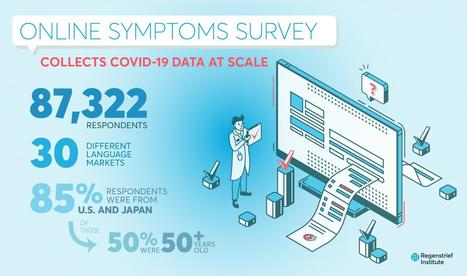







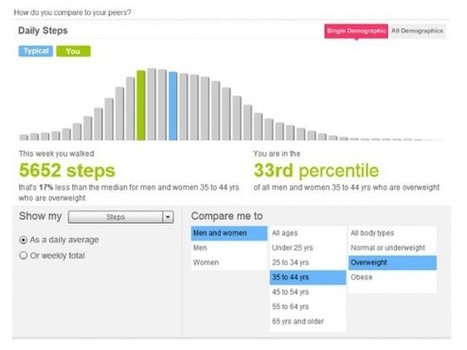
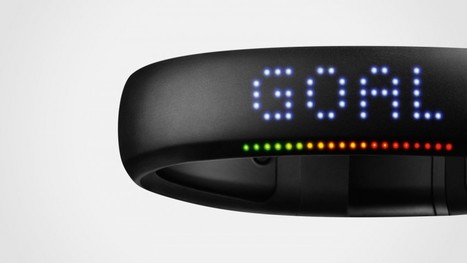


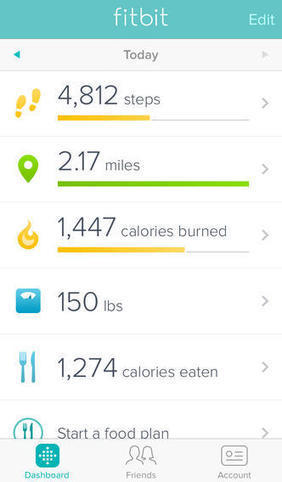
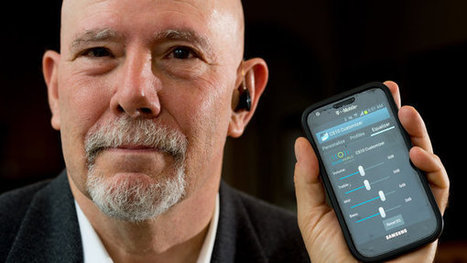


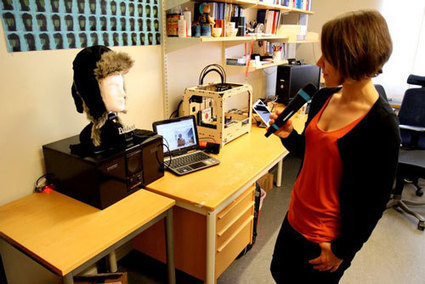








Wow! Online news tools can be a useful strategy to reach a broad and diverse population during emerging outbreaks. This provides a quick and easy way to capture data on what is happening in the community at large rather than people hospitalized with the disease.
The beauty of this approach is that it offers access to a wide audience, many of whom might not be captured in other data gathering methods. Make no mistake, this is not useful when used in a silo. Its amazing if this is used as a step one tool to bring in participation to more involved mHealth tools for surveying.